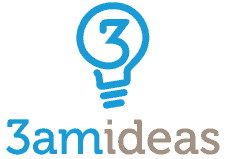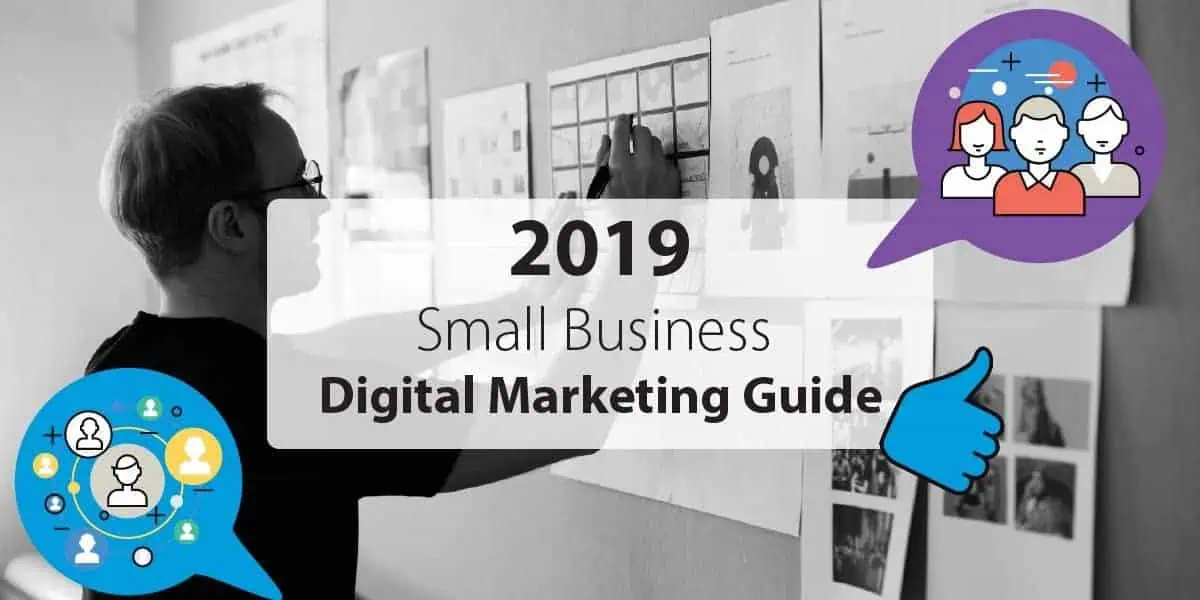Your Online Marketing Guide For 2019
Small businesses account for over $330 billion of Australia’s economic output. Small business ventures are also the biggest employers in our country, with something close to 90% of the workforce being employed by the small guys.
The sad thing is there is very little help out there for small businesses to get started. In fact, there are very few packages out there that are solely focused on a small business digital marketing offering.
You will come across many digital marketing gurus online, but a lot of that information is now outdated or just plain wrong.
In order to get the Christmas giving started early this year, we have created the 2019 Digital Marketing Guide for Small Business. This should act as your checklist the next time you go over your small business digital marketing plan. With the digital revolution still well under way, now is the time to capitalise on this movement.

Quick Browse – What do you want to know about?
- Small Business Marketing Basics
- Tracking Web Traffic With Google Analytics
- The Importance Of Content
- Search Engine Optimisation (SEO)
- Google My Business (GMB)
- Google Ads – Pay Per Click Advertising
- Social Media (Non-Paid)
- Social Media (Paid)
- Instagram Influencers
- Communicate With Your Customers
Small Business Marketing Basics
We are living in a time where people are trying to convince you that just running Facebook ads is marketing. Advertising is a form of marketing, but on its own does not form a marketing strategy.
A proper, strategic marketing campaign is a holistic approach to communicating your brand message, and ideally, you should be omnipresent in order to achieve this. This means you want to be present and visible on as many channels as possible to get yourself in front of your customers. If they have had several points of contact with your messaging, they are far more likely to trust you with their money.
Quickly going back to marketing basics 101, let’s look at the 4P’s of Marketing (There are actually 7P’s but that’s a bit more advanced) in the image below, and how Facebook advertising on its own cannot be classified as marketing.
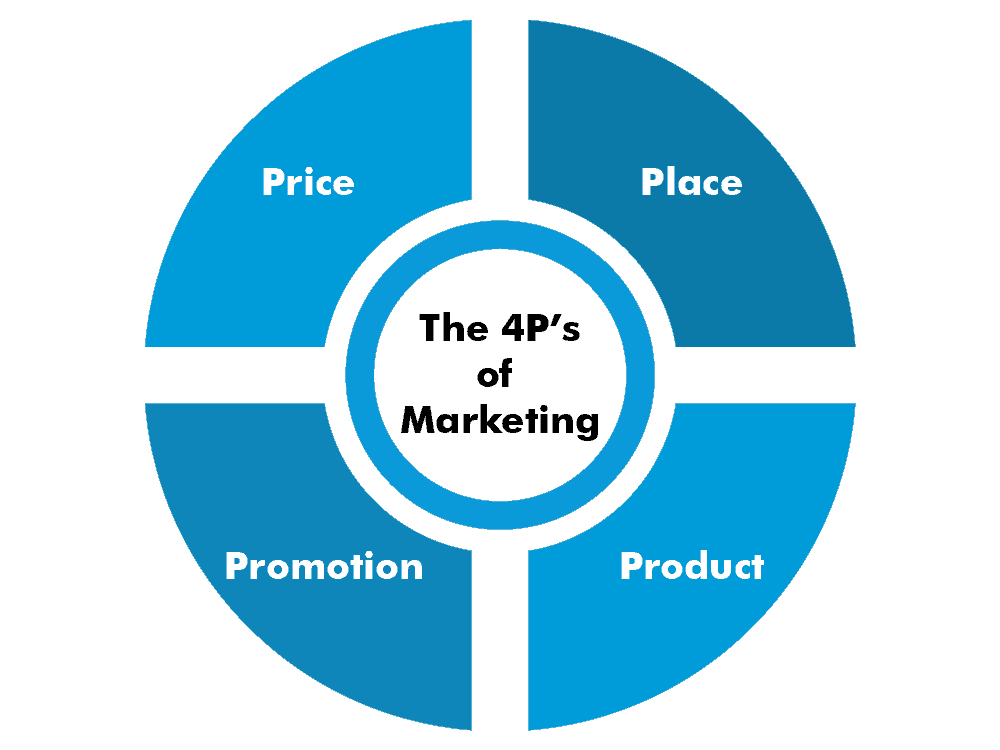
The key to identifying the best small business marketing channels for you is by doing a little bit of research. Normally, I like to start with your biggest competitors in the market or those really big players overseas. They have had plenty of time and money to spend on market research, so why not borrow some of their knowledge.
Researching Competitor Marketing Basics
- Which social platforms are your competitors on? Which ones are they actively using?
- If they are on Facebook (if, lol), check out their “Info and Ads” section to spy on their advertising. How many ads are they running? Can you identify a potential sequence of ads here that you could tweak for yourself?
- What do their adverts look like? What graphics and design elements are they using and do you see how this could be effective for yourself? What Call to Actions are they using? Are they using images or video?
- Are they running Google Ads? If so, which keywords are they triggering for? Is there a gap here that you could target?
- Does their website have a blog? If so, they are most likely working on some form of SEO. Which keywords do they seem to be targeting? Is there a gap you can fill?
Once you’re familiar with the tactics the big players are utilising to make business work for them, strive towards duplicating these digital marketing strategies. Just make sure you’re tailoring it to your target market.
Tracking Web Traffic With Google Analytics
Your digital marketing efforts are almost pointless if you’re not measuring them. Google Analytics allows you to track your website visitors’ behaviour totally free. Just by signing up here, you can start to begin tracking data and recognising behaviour trends.
If you can identify the behaviour trends of your website users, with a bit of creative thinking, you can tailor new strategies, or website tweaks, to improve your conversion rate.
Your content goes here. Edit or remove this text inline or in the module Content settings. You can also style every aspect of this content in the module Design settings and even apply custom CSS to this text in the module Advanced settings.
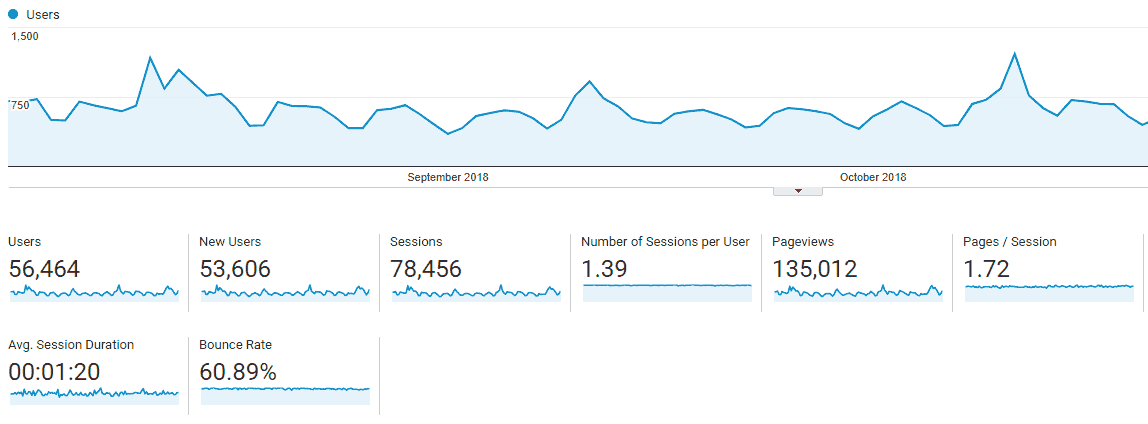
The Typical Google Analytics Dashboard
I have come across family businesses with multi-million dollar turnovers, who haven’t spent a single day tracking their website visitors. Any marketing strategy we suggested from there could only ever be based on external research and educated guesses. Without concrete data, you cannot make concrete decisions.
The Benefits of Using Google Analytics
- Track your website visitors and their behaviour on your site.
- Identify geolocations, age, gender and other valuable information about your visitors.
- Track conversions such as contact form submissions, phone number clicks or online purchases.
- Visualise and track the behaviour flow of visitors from your landing page to other pages on your site.
- Create content based on this data.
Google Analytics is your business’ personal crystal ball. It gives you unique insights that you should be capitalising on. As Diane Green, CEO of Google Cloud, said: “Data is the new oil”. So start gathering your data.
The Importance Of Content
It’s virtually impossible to get good quality traffic to your website if you don’t have good quality content. Content, such as blog posts, is a perfect way for you to attract quality website traffic. With an average through-traffic of 20%, these posts can dramatically increase your website’s lead generation capabilities.
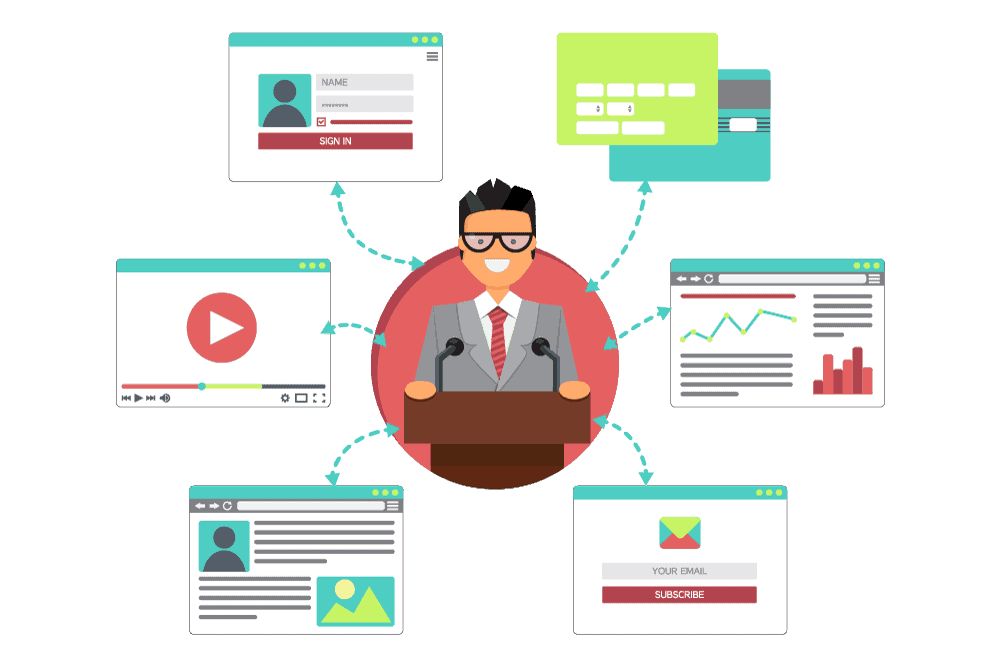
Imagine writing a quick DIY guide for your customers. The majority of these will use your guide for themselves to try and save some money, which is great. These tyre-kicker people have now not wasted your time by calling up and chasing the cheapest price. But, you also helped them out, which means there’s at least some form of brand recognition there.
When it comes to them needing help with something bigger, you might just be that person they call because you helped them out earlier.
And all you’ve done so far is write a blog post…
With your average 20% through-traffic though (from blog post page onto another page of your site), you’re bound to see some conversion. These are the people that have found this to either be too difficult or too time-consuming for them to worry about. You’ve proven to them you know what it takes to solve their problem, and they might just want to pay you to fix it for them.
Wanting to create quality content, and regularly needing to publish it, is the main reason behind most websites having a blog on their website. If you’re not blogging, you should get onto it immediately as you’re missing out on an opportunity to build brand awareness and authority, but also to attract more site traffic that leads to business.
Five Tips To Boost Your Content Marketing
- Create better and longer content than your competitors.
- Be more time relevant. Does your competitor have a killer article from 2016? Time to write a new one for 2019.
- Structure your content with headlines.
- Create & publish consistently.
- Reach out to people in your industry that you don’t compete with. Get some guest posts up on other sites.
When great content is combined with Search Engine Optimisation (SEO), you’re starting to build a multi-channel digital marketing strategy that’s to be respected.
Search Engine Optimisation (SEO)
Getting organic website traffic is important, and that’s where SEO comes in. Search Engine Optimization (SEO) is the process in which we work to rank your site higher on Google. Everybody wants to be on the #1 spot on Google’s search engine results page.
The nature of SEO tends to be for the longer term, as it takes time to optimise your content and for Google to recognise these changes.
It is for this reason that you should get started on SEO early. As a small business owner you’re probably worried about where the next job is coming from, but plan for long-term success with SEO.
Wouldn’t it be nice if website traffic came in by itself? Content marketing with SEO will give you just that.

Website Traffic Increased & Sustained From Local SEO
Search Engine Optimisation Basics
- SEO starts with sound foundations. Google likes websites that are neat, tidy and error free. Do the right thing by Google and they will do the right thing by you.
- SEO is about quality content. Produce content that search engines and people love to read. It’s one of the only ways Google can tell what your site is about, and what sort of visitors you want.
- SEO is also about User Experience (UX). If you don’t have a mobile friendly website you’re not providing a good user experience. The same goes if you don’t have an SSL certificate, or your website loads really slowly. Google will prefer your competitors’ sites if you have bad UX.
- SEO is about speed. People are impatient, and the quicker internet connections get, the more this will happen. Gone are the dial-up days where we wait several minutes for a picture to load. People are speed snobs and they want things quickly. Get yourself quality website hosting to make sure your servers respond quickly.
- SEO is about reputation. If websites like Forbes, or the New York Times, point to your websites, Google thinks you’re friends with the big boys. If you build your reputation with backlinks from credible sources, Google has no choice but to rank you higher.
Search Engine Optimisation can sometimes feel like a never-ending story. Especially in the early days where your SEO efforts are only having a minimal impact. Get started on your SEO now, so you’re not left behind in the long-term.
Google My Business
Google My Business (GMB) is a, currently, free tool that allows you to establish yourself as a genuine local business.
The knowledge panel, an example of which you can see below, offers information about your business, such as opening hours, website links (do I smell a free backlink?), call and direction buttons, and a whole heap of other goodies.
If your business is relying on website traffic from people local to you, your Google My Business account should be registered, optimised and regularly posted to.
GMB also allows you to receive and manage your Google reviews, a critical addition to your SEO efforts. You should always aim to respond to these, both positive and negative ones.
You can start your Google My Business journey here.
Get More Out Of Google My Business
- Complete your profile. Make sure to put in as much information as Google allows you to include. As long as the information is relevant it should be in there. At the very least your website must be in there. It’s a backlink you can’t afford not to have.
- List relevant categories. If you can you should be listing multiple categories for your business. If only one is relevant, then so be it, but before you settle on that have a quick look what your competition is listing themselves as.
- Post pictures. These pictures show up on the search results when people search for your business or if you qualify to be placed top for your relevant keyword. They also make your business much more personable or a snapshot of what you offer.
- Post posts using your keywords. As always, stay relevant to what your business is about, but you should aim to regularly post on your Google My Business using keywords you want to be ranking for.
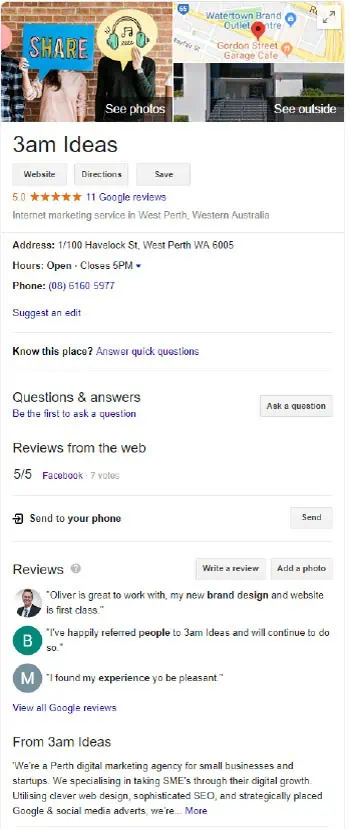
Google Ads – Pay Per Click Advertising
Google Ads is one of the original platforms that allowed us to affordably advertise online. Google Ads has been around for longer than Facebook has even been a thing, so it’s quite refined and super effective.

Despite the sceptics out there who like to say that “Google Ads don’t work” or “I never click on ads”, the data says otherwise. The results we see from Google Ads are qualified customers with high-commercial intent. That means they are normally super eager to buy from you.
Over 18% of all local searches lead to a sale within one day.
Google Ads Hacks To Boost Performance
- Google loves being specific. Avoid sending ads traffic to your homepage. If you’re selling lawn mowing services, direct them to a page along the lines of www.mywebsite.com.au/lawn-mowing-services. This will reduce your average cost per click
- Set up simple conversion tracking on Google Ads. If you can’t track contact form submissions, at least try to automatically redirect visitors to a thank you page after they’ve sent a form or bought something off you. Tracking conversions like this will clearly show you if Google Ads are making you money or not.
- Run at least three different variations of the same advert under each Ad Group. This gives Google more to play with and will help get you the cheapest clicks.
- Build a healthy negative keywords list. Negative keywords are ones you don’t want to appear for. So if you’re selling premium services, add the words “cheap” “affordable” etc to your negative keywords list.
Google Ads is one of our favourite tools for promoting small businesses. It is an extremely effective small business digital marketing tool when used correctly. Just keep an eye out on your spending if you’re running ads yourself.
Social Media (Non-Paid aka Organic)
We are bombarded these days by advertising on Facebook and Instagram. We are made to believe that these ads are a get rich quick scheme or that they are some sort of silver bullet.
Depending on the circumstance all of the above, or none of it, could be true. Each business, product or service, and target audience is different. What worked for somebody in America, might not work for you.
What we do know though, is that people are forgetting that social media exists for the purpose of being social. You should be actively present on your social media channels in the form of organically posting.
You’re wanting people to know you’re present, alive and thriving. If you post on social media every day sharing your thoughts, wisdom, success stories etc. you’re on the right path. You’re creating a conversation and a following and that’s how your success will come.
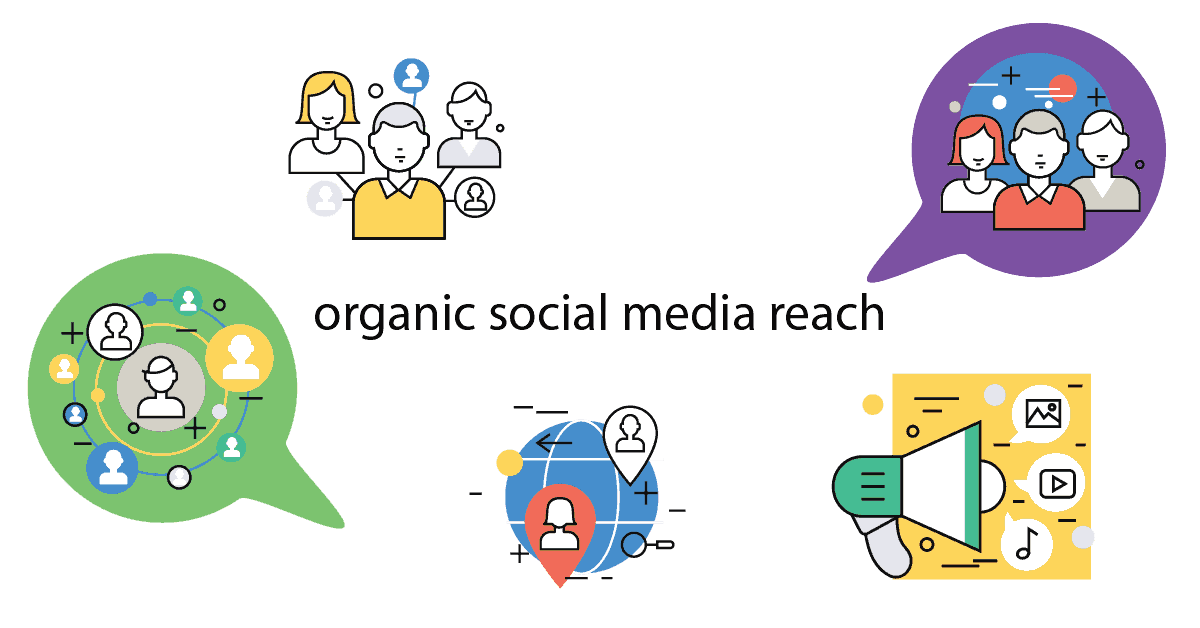
Tips To Boost Your Organic Social Media Reach
- Post regularly. People want to know what you’re up to. By posting regularly you’re also staying top of mind, so when it does come to people buying, you’ve been right there all along and you run a very good chance of being thought of. This is called being part of the customer’s evoked set. The evoked set is the first group of products or services that instantly come to mind when the buyer has a need.
- Post consistently. If you’re running a series of posts, be consistent with them. You never know what a loyal following can do for you, no matter how small it is. If your followers are expecting a post from you on Wednesday afternoon, you better give them one or lose them.
- Schedule your posts a month ahead. Sit down once a month and schedule your posts a whole month in advance. You can then relax and worry about other things in your business, while social media content takes care of itself. Look at something like Hootsuite to help you with scheduling.
- Engage with your community. Are people commenting on your photos or videos? Respond to them. It will keep your post active in their notifications list and their friends will see them interacting with you. The more you can be present, the more you’ll be recognised and remembered. #awesome
- Use a healthy mix of hashtags. Using a range of popular hashtags mixed in with lower traffic ones and ones unique to you, means you have a very great opportunity for being found.
The key to organic reach on social media is to post engaging content. If your page followers are liking, sharing and commenting on your organic posts, then Facebook sees your followers are enjoying themselves and will serve your content more often. The same works the other way, so don’t post spammy content with baity headlines.
Social Media (Paid)
Finally, we’ve gotten to paid social media advertising. Not a week goes by when we don’t meet clients who are dead set on doing Facebook or Instagram ads, just because it’s the thing to be doing right now.
In one form or another, I believe, paid social media advertising can be for every company. For some, it will be far more effective, and easier to get to their audience than it would be for others.
In order to crack the paid social media advertising code, you need to understand the nature of the platform.

You’re placing ads in front of people based on things they like, and you’re hoping to hijacking their attention.
And then there are the innocent bystanders who have to deal with your ads.
Let me explain…
As the Facebook algorithm, you could assume that people who like dogs, might be interested in dog food advertising. You would assume that people who own houses might need a lawnmower man and thus would be interested in ads for this type of service.
For both of these scenarios you’re going to have some people seeing your ads who don’t want them. You could quite easily get to people who might like dogs, but don’t own one. Or maybe they are homeowners but don’t have any grassed areas.
Social media targeting is not perfect, especially when compared to Google Ads’ keyword triggers.
People are on social media to see what their friends are doing and what funny cat videos might have been posted. People don’t go to social media to find a product they’re going to buy.
Or heaven forbid, to be sold to…
This means commercial intent tends to be very low as you’re only getting website traffic by hijacking people’s attention span through engaging ad copy, attention-grabbing images or videos, or an offer that is too good to refuse.
This is where social media marketing strategies, like retargeting and digital funnels, come in really handy.
Retargeting allows you to target people who’ve previously been on your website. Meaning you’re tapping into an audience that is at least somewhat familiar with your brand already.
As I’ve mentioned earlier, you should aim to have five to six points of contact with your customers, making your job of signing them up as a customer much easier. Retargeting helps you get those additional points of contact.
When combined with Google Ads, retargeting becomes an incredibly powerful strategy. You’re getting people onto your website with Google Ads (high-commercial intent) and are retargeting those who did not convert. This is why it is so powerful being present on multiple channels and combining these into a holistic strategy.
Just imagine retargeting organic website visitors from SEO or organic social media posts. The opportunities are endless.
Facebook Ad Hacks For Better Conversions
- Sign up for Facebook Business Manager and integrate the FB pixel.
- Upload your customer data to Facebook and build Lookalike Audiences to advertise to.
- Retarget website visitors who did not convert (abandoned carts etc.).
- Give Facebook plenty of ad variations.
- Pay close attention to your relevancy score if you want low cost per clicks.
Facebook and Instagram ads should be part of your digital marketing toolkit, just don’t consider them standalone marketing platforms. While you might see some results, the impact is exponentially compounded when you combine forces and go cross-platform.
Instagram Influencers
We’ve all heard the word Instagram influencer but what actually are they? How can Instagram influencers help small business?
Instagram influencers are just people like you and I that have spent considerable time and energy growing their follower base on the social media platform.
The quality and value of an influencer is directly determined by the quality of their followers. You can judge this by the engagement rate (engagement per post divided by the number of followers) they get on a regular basis.

Influencers have usually gathered an audience in a particular niche, and that’s where your business can benefit. If you’re trying to reach mums of newborn children, you could reach out to an influencer with such an audience and have them mention your product in one of their upcoming posts.
This usually involves paying a set amount for a series of posts, and normally always a range of free products that you send to the influencers, which they will use in their promotional posts for you.
If you’re reaching out to influencers just remember to be polite and courteous. Good quality influencers care about the brands and products they promote. If they didn’t, it would devalue their offering. This means these people won’t usually take every person who messages them for a quick gig.
Consider which strategy is right for you, but opting for an influencer with less than 100k followers should still give you decent exposure, without the several hundred dollar invoices attached.
Communicate With Your Customers
Communication is key, and the quicker you can do that the better off you are. One of the main reasons we inherit work from other digital marketing agencies is because of their lack of communication or a failure to respond in a timely manner.
Arming yourself with some communications tools should be part of your normal business operations already. If you don’t use any already, there are two we absolutely love to use.
Let’s break these down by function.
CRM – Hubspot
One of the best things you can do for yourself is to get yourself a CRM, or customer relationship management software.
Things can quickly get overwhelming when work starts pouring in, and you lose sight and control over whose emails you still need to reply to, or which stage of the deal a certain customer is at.
Add a few of your staff members into the mix and you’ve lost control of communications without a proper CRM.
With a free CRM, like Hubspot, you integrate it into your email program and automatically record details about the contacts you converse with. Automatically capturing data like email, phone number, website address will be so important as you grow your own team who you will want to instantly share information with. You don’t have time to do all of this manually.
Did you offer a deal to a certain customer? Add it to the CRM and your next team member that speaks to the customer will know as well. This gives your clients a much smoother experience with your company and a seamless sales process, making you look like you really know what you’re doing.

Email Database & Automation
You might not be aware but you’re technically not allowed to add a whole bunch of emails at once to your regular email account and send out a newsletter. This can get you blacklisted from the internet, which is why you will need a proper email database and automation software.
Getting yourself signed up to a free provider like Mailchimp, will allow you to mass email your customers with seasonal offers and regular email communications, without getting banned.
MailChimp will also show you your opening rates of emails, giving you invaluable insight into the value of your database. Normally, you can expect an opening rate of about 20% on emails sent to an existing database, which is fantastic!
Normally, you can expect an opening rate of about 20% on emails.
You should be tying your email marketing campaign together with your other online marketing initiatives. This is especially true if you’re an eCommerce business. It is much easier to sell to a previous customer than it is to find new ones.
Not to mention the power of abandoned cart emails…
Email automation should also be a part of your digital marketing repertoire. Welcoming subscribers to your email list, or cross-selling to your existing customers. This should be done automatically. Reduce your manual labour as much as possible.
Any good digital marketing sales funnel has email automation as part of it. Mailchimp offers free accounts for up to 2000 subscribers.

Social Media Chat Bots
A lot of business owners tell us they hate automated chatbots. Chatbots, like Manychat, help you automate conversations you might commonly have on Facebook with your customers.
It also allows you to set up a sequence of questions based on user input, which can work wonders for quoting or booking systems.
Despite business owners telling us they feel they devalue the brand, the actual data say they work.
And rightfully so…
Chatbots make communication instant. The user didn’t get to speak to a human, but they did get their answer. What’s more important? Human interaction or a seamless experience with your business?
The Key To Successfully Implementing Chatbots
- Understand your customer journey.
- Base chat sequence on data, not your gut instinct.
- Check out your competitors’ chatbots.
- Use natural language, but don’t try to hide the fact it’s a bot.
For a great example of a chatbot, check out the one Coles are using. I especially enjoyed interacting with their chatbot during the hype of the mini-series they released in 2018. It was really well done.
That’s All Folks
Being omnipresent online seems like a daunting task for DIY digital marketers and business owners.
With our 2019 Definitive Digital Marketing Guide for Small Business we’ve shown that marketing doesn’t have to be hard at all.
We’ve given you nine ways to keep in touch and create points of contact with your prospective customers.
All you have to do is record your data, tie together platforms, and automate communications where you can. Embrace digital initiatives, the industry is going to keep growing in importance for all businesses wanting to thrive and innovate with the digital changes.
Soon we’re going to have people entering management level positions that don’t remember dial-up internet and pre-internet days. This train ride has only just started.
Have you got any questions? Feedback? Fire them off in the comments below.
